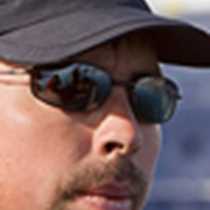Traveling Through the Pack Ice to Edgeoya
Because the Freeman Sound was blocked with ice, we spent the evening and night travelling around Edgeoya. Since we actually were able to pass through Hinlopen Strait, this means we have circumnavigated Svalbard during this journey.
In the ice we have encountered more polar bears, and not to forget walruses. They are large mammals, weight can be up to 2,000 pounds, mainly blubber. The walrus moult their skin during the summer season. Often we see walrus having red skin, and this is when they let warm blood out to the surface of the skin. This makes the moulting go faster for the walrus.
On southern part of Edgeoya (Årdalsnuten) we did a landing on green and lush tundra. Here a small branch of the Gulf Stream enriches the surrounding area with some warmer water. Walking around the tundra we experienced rich wildlife with lots of pink-footed geese, waders, snow bunting (which is the only songbird on Svalbard) and lots of kittiwakes. Walking back along the beach we could also se the remnants of a trapper hut from 17th century. This belonged to Russian trappers called "Pomors". They made very distinctive trapper huts, that was prefabricated in Russia. The Pomors had a different way of trapping compared to the Norwegians, with large crews and small trapping areas. After a century, the Norwegians took over the foxtrapping on Svalbard, using dogsledges covering larger areas, which was more efficient from an economic perspective. As we all know, this lead to many animal species like the Svalbard reindeer and polar bear becoming more scarce.
Because the Freeman Sound was blocked with ice, we spent the evening and night travelling around Edgeoya. Since we actually were able to pass through Hinlopen Strait, this means we have circumnavigated Svalbard during this journey.
In the ice we have encountered more polar bears, and not to forget walruses. They are large mammals, weight can be up to 2,000 pounds, mainly blubber. The walrus moult their skin during the summer season. Often we see walrus having red skin, and this is when they let warm blood out to the surface of the skin. This makes the moulting go faster for the walrus.
On southern part of Edgeoya (Årdalsnuten) we did a landing on green and lush tundra. Here a small branch of the Gulf Stream enriches the surrounding area with some warmer water. Walking around the tundra we experienced rich wildlife with lots of pink-footed geese, waders, snow bunting (which is the only songbird on Svalbard) and lots of kittiwakes. Walking back along the beach we could also se the remnants of a trapper hut from 17th century. This belonged to Russian trappers called "Pomors". They made very distinctive trapper huts, that was prefabricated in Russia. The Pomors had a different way of trapping compared to the Norwegians, with large crews and small trapping areas. After a century, the Norwegians took over the foxtrapping on Svalbard, using dogsledges covering larger areas, which was more efficient from an economic perspective. As we all know, this lead to many animal species like the Svalbard reindeer and polar bear becoming more scarce.




